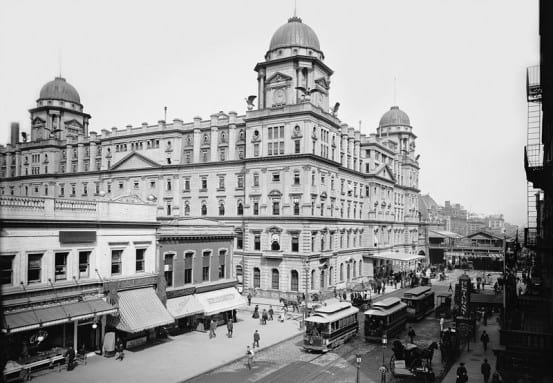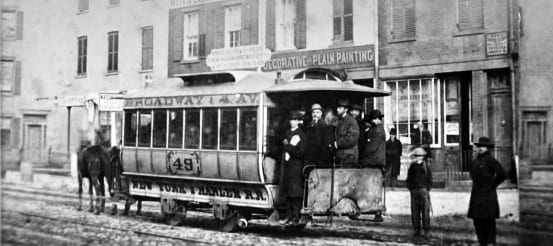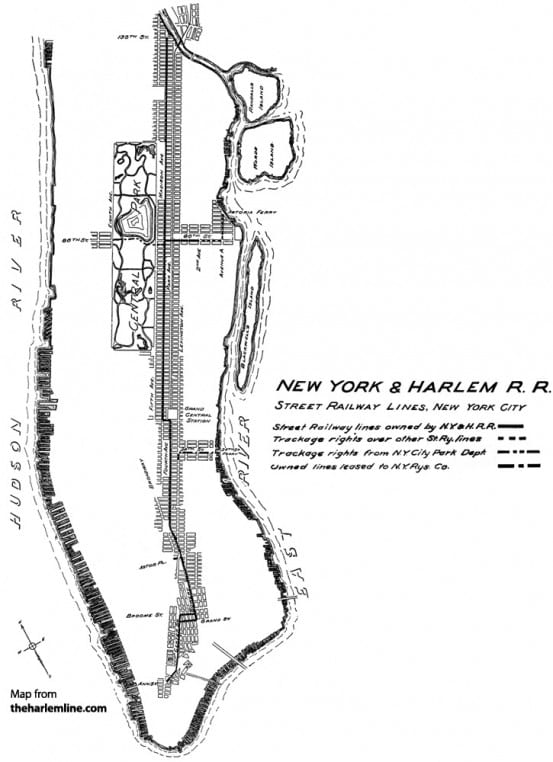
Arguably one of the most famous photos of a horsecar in New York City, by famed photographer Alfred Stieglitz.
Want to irk a railfan or a history buff in only a matter of seconds? Just tell them that you’re in Grand Central Station. Grand Central is, of course, a Terminal – and as Danny Brucker would explain, “because trains terminate here.” The previous incarnation of Grand Central was, however, a station, and had tracks that did continue further south.

This is Grand Central Station, circa 1905. This, on the other hand, is not Grand Central Station.
If you’re up on your Harlem Railroad history, you’ll remember that the New York and Harlem Railroad began operating in 1832. Starting with a mile of track from Prince Street to 14th Street, the first trains were pulled by horses. As the line grew, first to Harlem, then beyond to Westchester, and ultimately to Columbia County, passengers would have to transfer to steam locomotives for the rest of their journey. Thus the New York and Harlem Railroad was a combination of two distinct parts – a street railway line (which eventually lost the horses) about ten miles long, and the railroad line, north of 42nd Street, about 137 miles long at its peak.

An early horsecar on the New York and Harlem Railroad in New York City. As a random aside, it was these railroad horses, often worked extremely hard, that were a significant reason for the founding of the ASPCA in 1866. The ASPCA actually operated the first “horse ambulance” and made sure these rail workhorses had fresh drinking water daily.
Eventually the rail line was leased to the New York Central, and the street railway line to the Metropolitan Street Railway Company (and later the New York Railways Company). When Grand Central Terminal was completed, the divorce of the two was quite obvious, but before that, where exactly did the street railway operate? For the most part, on Fourth Avenue, and extending as south as Ann Street, about a mile from the southern tip of Manhattan island. To get a better picture of the line and where it operated, we of course have a lovely map!



because you know that’s one of my pet peeves ;)
I may have been thinking of you when I wrote it ;)
Emily, I love the article, because my grandfather worked for the NY Street Railway in the 1890s. The photo is one I would like to use in our family history, but I clicked on your link to Alfred Stieglitz and found that the photo is copyrighted. It is in a collection at the Metropolitan. I’d like to ask the Met’s permission to use the photo, but I wonder if you had to pay a fee to use it. I would only use it in our family history which would not be sold.
Thanks for any help.
Paula Kelley Ward